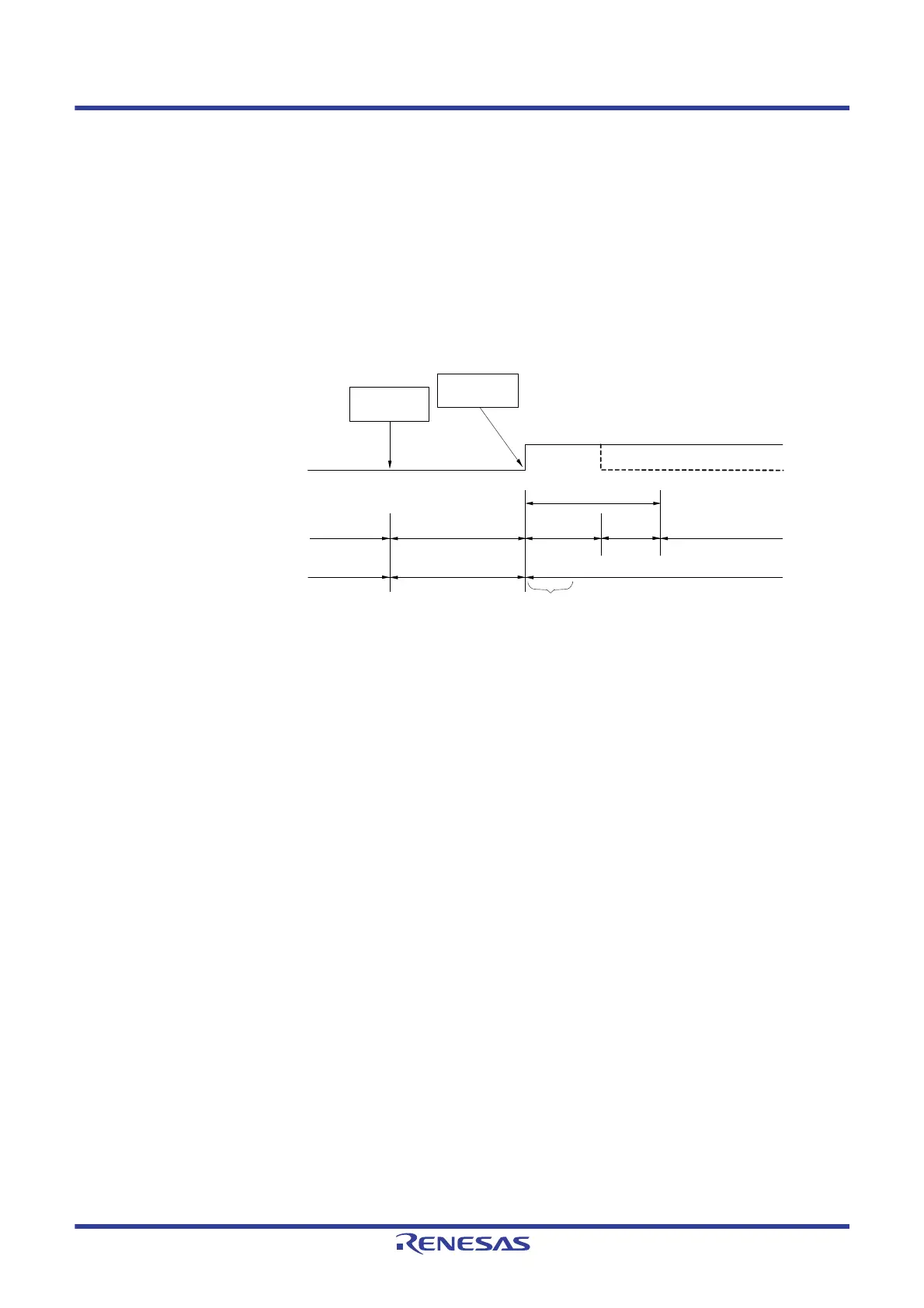RL78/G1H CHAPTER 20 STANDBY FUNCTION
R01UH0575EJ0120 Rev. 1.20 Page 740 of 920
Dec 22, 2016
(2) STOP mode release
The STOP mode can be released by the following two sources.
(a) Release by unmasked interrupt request
When an unmasked interrupt request is generated, the STOP mode is released. After the oscillation
stabilization time has elapsed, if interrupt acknowledgment is enabled, vectored interrupt servicing is
carried out. If interrupt acknowledgment is disabled, the next address instruction is executed.
Figure 20 - 4 STOP Mode Release by Interrupt Request Generation (1/2)
(1) When high-speed on-chip oscillator clock is used as CPU clock
Note 1. For details of the standby release signal, see Figure 19 - 1 Basic Configuration of Interrupt Function.
Note 2. STOP mode release time
Supply of the clock is stopped: 18 to 65 μs
Wait:
• When vectored interrupt servicing is carried out: 7 clocks
• When vectored interrupt servicing is not carried out: 1 clock
Caution To shorten oscillation stabilization time after the STOP mode is released when the CPU operates with the high-
speed system clock (X1 oscillation), temporarily switch the CPU clock to the high-speed on-chip oscillator clock
before the execution of the STOP instruction.
Remark 1.
The clock supply stop time varies depending on the temperature conditions and STOP mode period.
Remark 2. The broken lines indicate the case when the interrupt request that has released the standby mode is acknowledged.
High-speed on-chip
oscillator clock
Status of CPU
Standby release signal
Note 1
Oscillates OscillatesOscillation stopped
Normal operation
(high-speed on-chip
oscillator clock)
STOP mode
Normal operation
(high-speed on-chip
oscillator clock)
Wait
Supply of the
clock is stopped
STOP
instruction
Interrupt
request
Wait for oscillation accuracy
stabilization
STOP mode release time
Note 2

